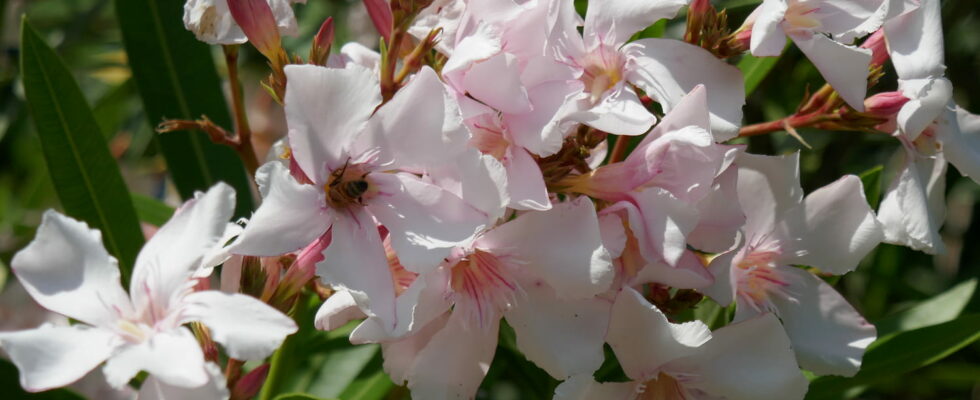Although it is very pretty and appreciated by gardeners, it is better to avoid putting this beautiful plant in your garden! Many people are unaware that contact with it and its ingestion can lead to irritation or even death.
Gardens are often considered havens of peace, where we grow flowers and plants to enhance our environment. However, it is important to remain vigilant regarding the choice of species that we decide to introduce into this relaxation area. Certain plants can in fact represent a danger, sometimes fatal, for humans and animals around them. A plant with magnificent and colorful flowers, in particular, is very popular among budding gardeners and seems completely harmless at first glance. It flourishes generously in the Mediterranean area, adding a touch of elegance to the green space. However, behind its beauty lies an unsuspected danger, because it is highly toxic. This is oleander.
Also known by the scientific name of Nerium oleander, Oleander is an evergreen shrub native to Mediterranean regions. Its appeal lies in its bright pink flowers which can vary from white to bright pink to red. Practical because it is resistant to drought and pruning, oleander can form hedges and coppices in private gardens, in parks or near public buildings. However, despite its charming appearance, this plant contains extremely toxic substances which makes it particularly unsuitable for gardens frequented by children or pets.
All parts of the plant are very toxic, because they contain oleandrin, a cardiotonic glycoside. Its ingestion, even in very small quantities, can cause death. The symptoms are then general (feeling unwell, chills, headaches, etc.), digestive (irritation of the mouth, hypersalivation, abdominal pain, vomiting, bloody stools, etc.), cardiac (light and rapid pulse or, on the contrary, too slow). , risk of collapse of blood pressure and rapid death, etc.) and neurological (tremor of the extremities, risk of convulsions, strong dilation of the pupils, etc.). Physical contact with the plant can also cause allergic reactions and severe skin irritation. If left untreated, a lethal dose causes death within four to twenty-four hours.
But many garden owners plant this species without being aware of its toxicity, attracted only by the beauty of its flowers. However, this can lead to serious accidents! It is therefore crucial to be fully aware of the risks associated with oleander and to avoid growing it in your garden, especially if children or animals have access to it. By opting instead for non-toxic and safe plants, you can create a pleasant and safe green space for the whole family.
